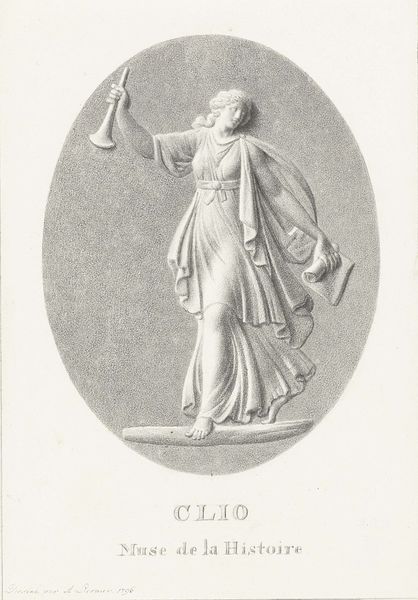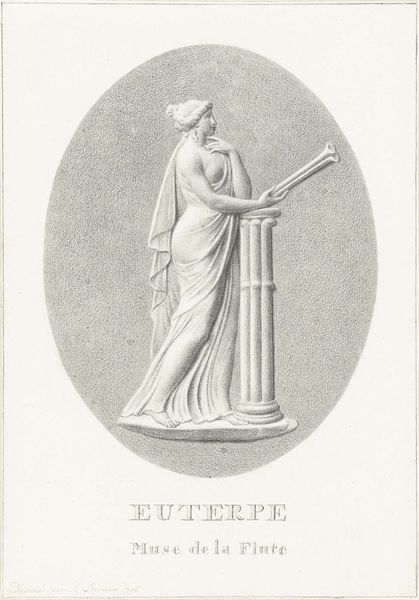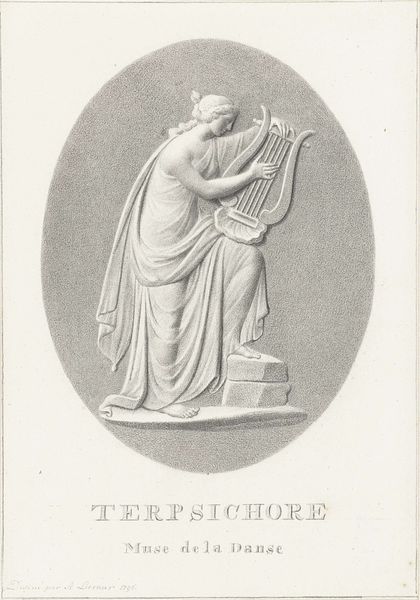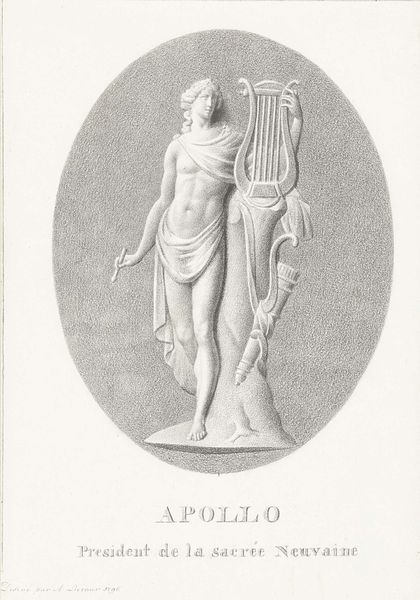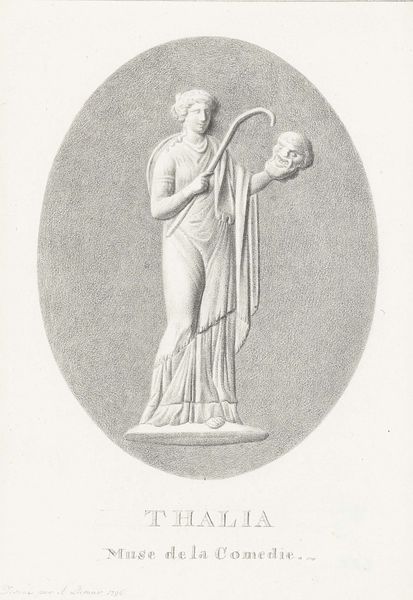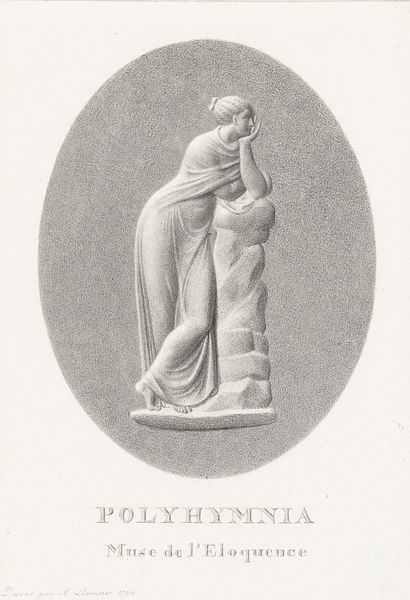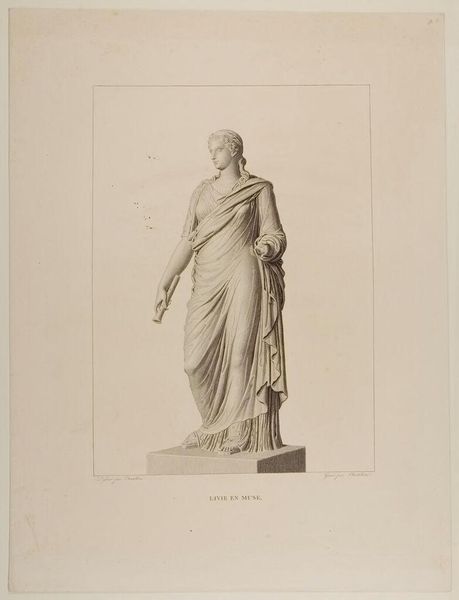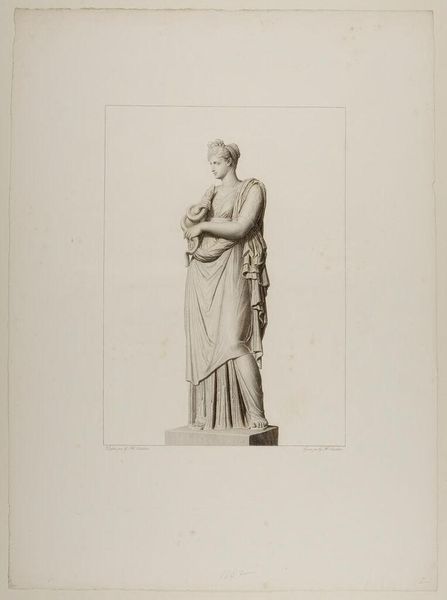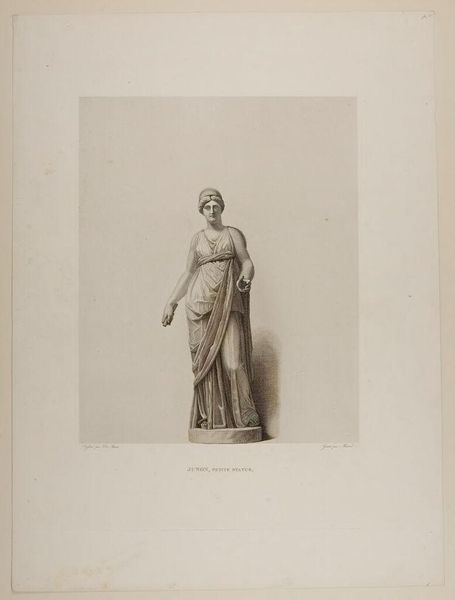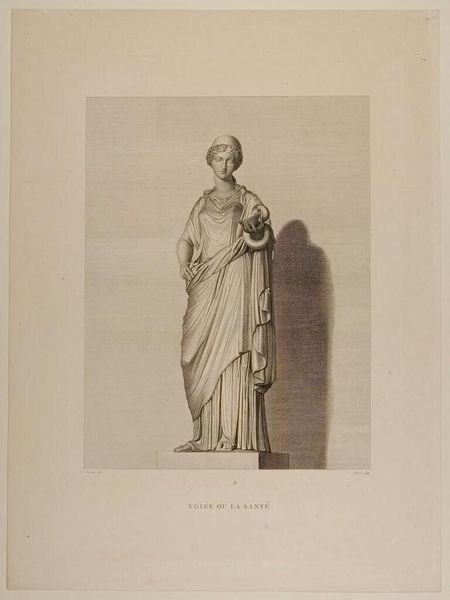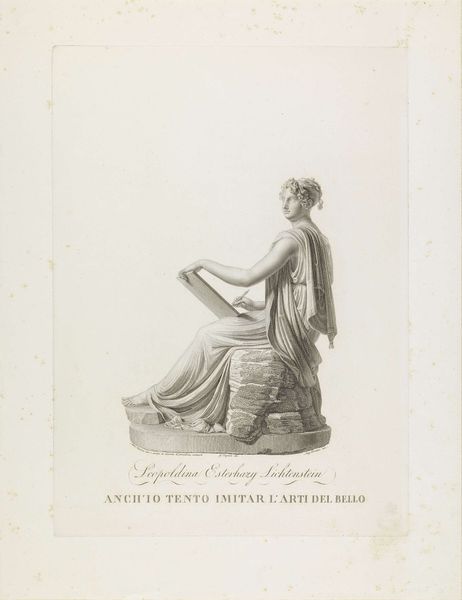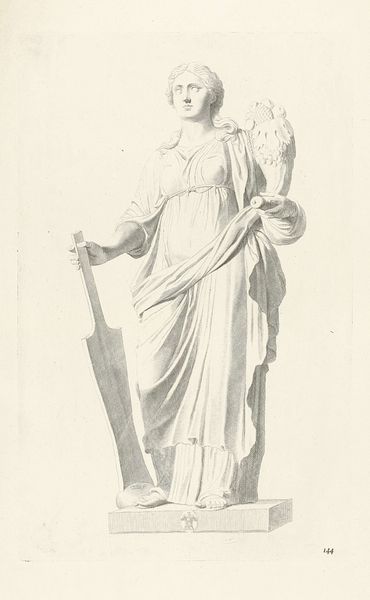
print, engraving
#
portrait
#
neoclacissism
#
allegory
# print
#
classical-realism
#
figuration
#
form
#
classicism
#
line
#
history-painting
#
engraving
Dimensions: height 240 mm, width 169 mm
Copyright: Rijks Museum: Open Domain
Curator: Standing before us is "Erato," an engraving by Alexander Liernur, created in 1796. It depicts the muse of love poetry. Editor: There's a certain coldness to it, wouldn’t you agree? The limited tonal range emphasizes line and form, but it feels more like a study than a celebration. Curator: Coldness, perhaps, reflects the Neoclassical movement's emphasis on reason and order, a deliberate turn from the flamboyance of the Rococo. It seeks to capture ideal beauty and virtue through allegorical representation. Erato is meant to embody love poetry. Editor: Absolutely, the linearity, the almost sculptural treatment of the drapery, speaks to that ideal. Look how the flowing lines of her garment interact with the rigid structure of the column and the harp. The tonal austerity brings an emphasis to this controlled dynamic of soft and rigid forms. Curator: Note the lyre; this object symbolizes not just music, but also harmony, a reflection of the muse’s role in inspiring love's sweet song, it signifies ordered emotion. Editor: Indeed. Semiotically, we could interpret the oval framing as a visual echo of an ancient cameo or a sculpted relief, a deliberate invocation of classical forms to lend authority. The textures achieved are minimal and it’s precisely this minimalist execution that defines the work's semiotic code and symbolic meaning. Curator: That reference to cameos certainly adds another layer. It reinforces the idea of permanence and timelessness. These images were meant to convey values and transmit cultural memory. Editor: And in terms of pictorial space, the lack of background depth flattens the figure, turning the artwork into a representation of its very essence—a concept rather than a literal illustration. Curator: Yes, she's become an icon of poetic inspiration and timeless love, beyond any specific moment. Editor: The composition almost strips her of personality; we are invited not to empathize, but to understand her role as a figure representing ideals of classical form. Curator: It does ask us to engage with history, with myth, and with enduring notions of beauty. Editor: And I suppose, that restrained elegance allows the underlying structures of form, line, and texture to express themselves, without unnecessary noise. Curator: Exactly, its message transcends time, love's gentle voice captured in an eternal tableau.
Comments
No comments
Be the first to comment and join the conversation on the ultimate creative platform.
